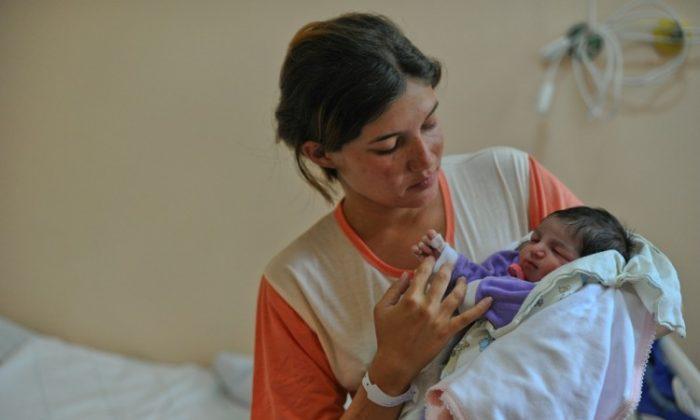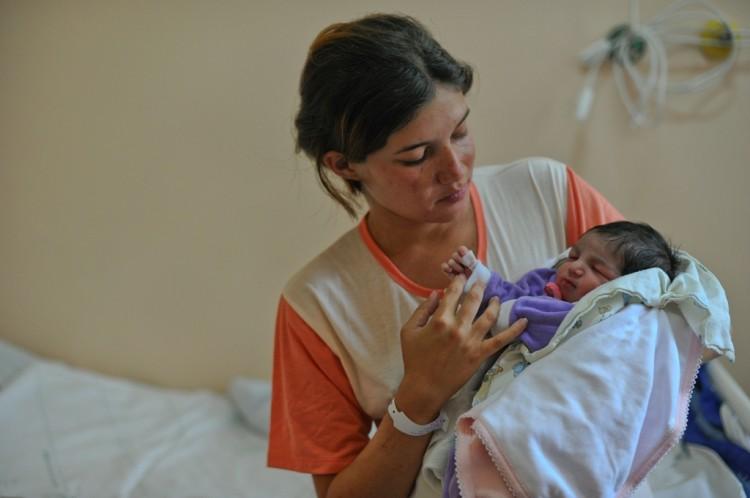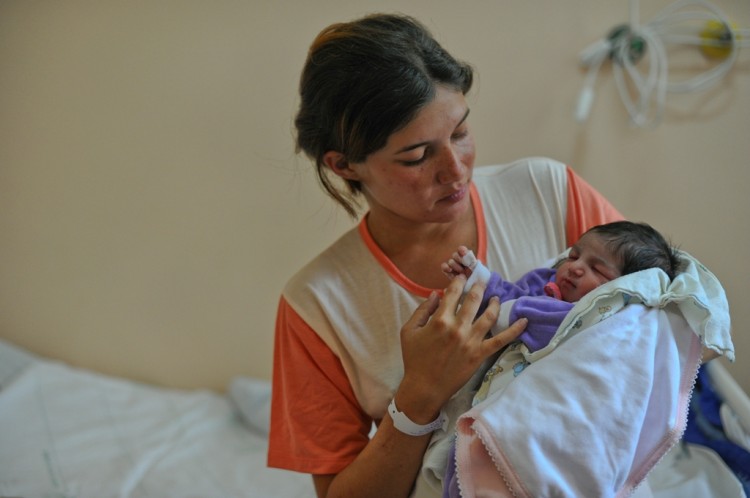ITATIBA, Brazil—Saturdays are a popular day to give birth in Brazil—especially in private hospitals where over 80 percent of deliveries are done by scheduled cesarean section. Brazil has the highest rate of cesarean sections in the world, and that rate has been increasing as the practice becomes more and more accepted into the culture.
The World Health Organization recommends a c-section rate of between 5 and 15 percent, as the process could put the mother and the baby at risk. In Brazil, however, between 2002 and 2009 the rate was almost three times as much as the upper limit (44 percent), and went up to 52 percent in 2010, according to figures published by UNICEF.
By comparison, the rate of c-sections in the U.S. between 2002 to 2009 was 31 percent.
The unusually high rate of the birth method in Brazil can be attributed to a few different factors. Obstetrician Claudia de Azevedo Aguiar, who is also a doctoral student in the University of São Paulo’s School of Public Health doing research into c-sections, said that the prevalence of this method reflects the Brazilian culture and the changes that the country has undergone over the last few decades.
“A country that overvalues interventions, hospitalization, and medicalization in healthy women and babies could not have had a different position in the world ranking of caesareans,” Aguiar said.
‘Profitable Business’
Aguiar said that c-sections have become a business for some health professionals, explaining why they are so widely promoted in society.
“Hospitals and doctors see this procedure as something quite profitable,” she said.
It follows that instead of medical reasons, the decision to perform a c-section is a lot of times based on what suits the doctor’s busy schedule or the family’s plan for birth on a certain date.
“[Factors include] convenience for the doctor whose time is all booked, so his other schedules aren’t disrupted; convenience for the family, who, for example, many times demand a c-section done on Saturday so their relatives can visit them on Sunday,” said Aguiar.
Other factors such as fear of pain during childbirth and the unpredictability of the onset of labor also guide the choice to go with c-sections.
But this fear might be due to lack of knowledge about pain relief methods available for birth, according to Brazil’s Secretary of Health Helvécio Magalhães.
“We insist that it is right to have analgesia,” Magalhães said on the ministry’s website.
Increased Risk
While c-sections are inevitable in some cases due to the present risk to the mother and the infant, if they are used in place of normal pregnancy in all cases, they could have the opposite effect.
According to the health ministry, a mother giving birth by c-section faces a mortality rate of six times higher than one giving birth naturally. C-sections also increase the chance of infection or bleeding in the mother, and quadruple the chance of the baby needing to go under intensive care (12 percent for c-sections compared to 3 percent for natural birth.)
The ministry also points out that “selective c-sections”– referring to when someone schedules a surgery for the baby’s birth–can increase the likelihood of health complications in the infant, since the fetus would not necessarily be ready for birth. According to research by Brazil’s National Health Agency (ANS), children born at 37 or 38 weeks are 120 times more likely to have breathing problems than those born at 39 weeks.
Campaigns to Reduce C-Sections
According to information on the website of the University of São Paulo, training courses for obstetrics became extinct in Brazil around 1970s, and the training of midwives became the sole responsibility of nursing schools. The trend reversed in the ‘90s, when new public policies encouraged the reduction of c-sections, resulting in the resurgence of undergraduate obstetricians.
Popular movements and campaigns from the ministry of health and other agencies are also promoting abandoning c-sections when not necessary.
The ministry of health has launched a program with a budget of 4.43 billion by 2014 providing care to the mother and the infant for two years after birth.
The program, called Stork Network, is based on the principles of respect for women’s freedom, monitoring and humanized service, and the right to a companion chosen by the mother during childbirth and postpartum in the hospital.
The program also promotes breastfeeding in the first hour of life and strengthening the skin-to-skin contact between mother and baby immediately after birth.
According to the ministry, the program reduced maternal deaths by 21 percent in the first year of its launch.
Deborah Berclaz, a 34-year-old saleswoman and psychologist from Porto Alegre in south of Brazil, is one of the women who took part in the program, giving birth to her baby last July.
Berclaz said her doctor recommended natural birth as her pregnancy presented no complications, and she gave birth in the hospital without any problems.
“I don’t think it’s very good to promote c-sections as many doctors are doing,” she said.
Difficult Battle
But the battle to reduce unnecessary c-sections might not be so easy.
“[I]t still is a movement against a hegemony,” Aguiar explained.
She pointed out that hospitals and health centers are unprepared for natural birth, as their setup is currently more focused on c-sections.
“Prenatal services do not prepare a woman for facing labor and childbirth without fear. All these [issues] maintain the process of going back to natural birth difficult, and leave it as an ideal to achieve.”
The Epoch Times publishes in 35 countries and in 19 languages. Subscribe to our e-newsletter.







Friends Read Free